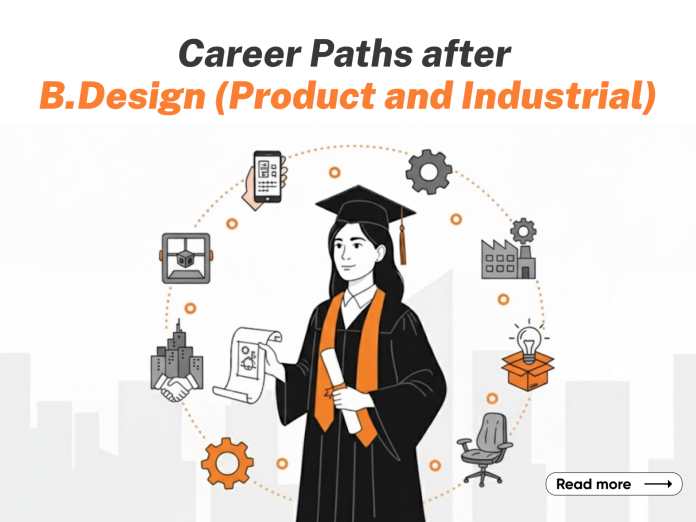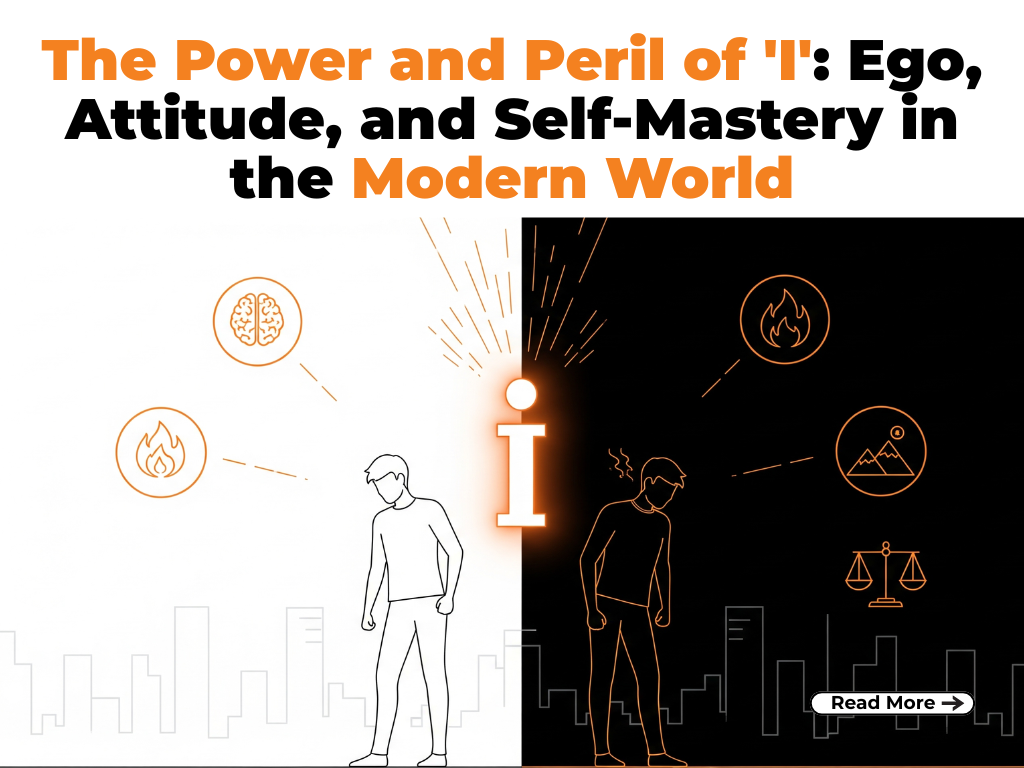- Why Choose B.Design Product and Industrial?
- What Do You Learn in B.Design Product and Industrial?
- How Does Product and Industrial Design Shape Everyday Life?
- Career Opportunities in Consumer Product Design
- What Are the Roles in Automotive and Transportation Design?
- Scope in Furniture and Lifestyle Product Design
- How to Start a Career in Industrial Equipment Design?
- Opportunities in UX and Human-Centered Design
- Entrepreneurship Possibilities in Product Innovation
- Which Global Markets Value Product and Industrial Designers?
- Conclusion
- Frequently Asked Questions (FAQs)
Why Choose B.Design Product and Industrial ?
In today’s rapidly evolving world, design is not just about how something looks—it’s about how it works, how it feels, and how it fits into people’s lives. Product and Industrial Design focuses on solving real-world problems through innovative thinking and user-centered design. By choosing a B.Design Product and Industrial, you become part of a profession that shapes everything from smartphones to sustainable furniture, medical devices, packaging, and smart home products.
A B.Design in Product and Industrial Design opens up a wide range of career paths across industries:
- Product Designer – Designing consumer goods like electronics, tools, or kitchen appliances.
- Industrial Designer – Creating systems and products with a focus on functionality, safety, and usability.
- UX/UI Designer – Designing digital product interfaces for improved user experiences.
- Design Researcher – Studying user behavior to inform better design decisions.
- Furniture Designer – Creating innovative, ergonomic, and aesthetic furniture pieces.
- Automotive Designer – Designing the interiors and exteriors of vehicles.
Benefits of Studying B.Design Product and Industrial-
- Blend of Creativity and Technology
You learn how to combine artistic vision with engineering principles to design practical and innovative solutions. - Human-Centered Design Approach
The course teaches empathy-driven design, focusing on user needs, accessibility, and ergonomics. - Hands-On Learning
Most programmes include studio work, prototyping, CAD modeling, and internships—giving you real-world experience before graduation. - Interdisciplinary Skillset
Gain knowledge in areas like materials science, sustainability, digital tools, design thinking, branding, and business strategy.
Choosing B.Design Product and Industrial is a smart step toward a creative and impactful career. It equips you with the tools to turn imagination into innovation and allows you to leave a tangible mark on the world through design. Whether you want to improve everyday objects or revolutionize future technologies, this degree offers a solid foundation and limitless potential.
What Do You Learn in B.Design Product and Industrial?
The B.Design Product and Industrial offers a comprehensive and hands-on education that blends creativity, technical knowledge, and human-centered thinking. The goal is to equip students with the skills to design innovative, functional, and sustainable products that improve everyday life.
We can learn in-
1. Design Fundamentals
Principles of design (form, color, composition)
Visual communication and sketching
2. Product Design Skills
Concept development and ideation
Ergonomics and human factors
3. Technical and Digital Tools
CAD (Computer-Aided Design): Tools like SolidWorks, Rhino, Fusion 360
3D Modeling & Rendering: Using software like Blender, KeyShot, or Autodesk Alias
4. Materials and Manufacturing
Understanding materials (plastic, metal, wood, composites)
Sustainable and eco-friendly material selection
5. Projects and Studio Work
Individual and group design projects
Industry-sponsored live projects
At Lovely Professional University (LPU), the B.Design Product and Industrial Design programme offers a dynamic, industry-oriented curriculum that equips students with the creative and technical skills required to design innovative, user-centered products. Students begin by learning fundamental design principles, visual communication, freehand sketching, and the basics of form, aesthetics, and color theory. As they progress, they gain hands-on experience in computer-aided design (CAD), 3D modeling, and digital rendering using tools like SolidWorks and Rhino.
B.Design Product and Industrialis a multidisciplinary programme that prepares you to turn ideas into market-ready products. It teaches you not just how to design things, but how to solve problems, enhance user experiences, and create solutions that are both beautiful and functional. Whether you dream of designing smart tech, sustainable furniture, or life-changing medical devices, this course gives you the foundation to make it happen.
How Does Product and Industrial Design Shape Everyday Life?
Product and industrial design is deeply embedded in every aspect of modern life, shaping how we interact with the world—often without us even realizing it.
From the toothbrush we use in the morning to the car we drive, the furniture we sit on, the packaging of our groceries, or even the layout of our mobile apps, all these elements are the result of thoughtful design decisions.
Designers focus on creating products that are not only visually appealing but also functional, ergonomic, safe, and sustainable. For example, a simple electric kettle is designed to be heat-resistant, easy to handle, energy-efficient, and intuitive to use.
In public infrastructure, designers contribute to creating user-friendly public transportation systems, accessible ATMs, or waste bins that promote recycling. Industrial design also plays a key role in healthcare, where the design of medical equipment, prosthetics, and assistive devices directly impacts patient comfort, safety, and recovery.
In essence, product and industrial design improves our everyday routines, enhances quality of life, and helps solve broader social, environmental, and technological challenges through meaningful and purposeful design solutions.
At Lovely Professional University (LPU), the Product & Industrial Design programme doesn’t just teach design theory — it embeds students deeply in real‑world practices so that the things they learn are reflected in everyday life around us.
Students are taught empathy from the very beginning, learning to map out how real people interact with products — their habits, challenges, needs — so that design becomes more humane and intuitive.
LPU students have been involved in projects like building solar‑powered cars, lightweight human‑powered vehicles, and entrepreneurial product/business ventures (e.g. at the UniMall). These student efforts show how design leads not only to beautiful objects, but also to products that address sustainability, mobility, affordability, and local needs.
LPU also hosts events like international conferences in product design, live expos (like INNOTEK) with hundreds of projects, where students present work to industry experts — so that what is being studied is directly connected to what the market, industry, and society expect.
Through hands-on learning, real-world projects, and industry exposure, LPU prepares future designers to create products that improve comfort, usability, and environmental impact. Ultimately, the education in Product and Industrial Design empowers individuals to transform ideas into meaningful solutions that enhance the quality of life for society as a whole.
Career Opportunities in Consumer Product Design
Consumer Product Design offers a wide range of exciting career opportunities for creative and technically skilled individuals. As a consumer product designer, you can work in industries such as electronics, home appliances, furniture, fashion accessories, personal care products, and packaging.
Career opportunities and roles for B.Design Product and Industrial graduates are-
| Category | Details |
| Career Roles | Product Designer, Industrial Designer, 3D Modeler, UX/UI Designer, Design Consultant, Freelancer/Entrepreneur |
| Industry Sectors | Consumer Electronics, Automotive, Furniture & Interiors, Packaging, Healthcare, Retail & E-commerce |
| Internship & Exposure | International exchange programmes, live projects with industry partners, hands-on workshops |
| Student Achievements | Winners in design competitions like Smart AQI Device design, participation in Innotech events |
| Placement | Strong placement support; alumni placed in companies like Bullspree, Navigus |
| Skills Developed | Creative design, CAD & 3D modeling, prototyping, ergonomics, sustainability, user research |
| Additional Opportunities | Start own design studios, entrepreneurship, research in sustainable and smart product design |
Achievements and Recognitions-
LPU students have showcased their talent and creativity in various competitions and events. Abhijot Singh, a student from the B.Design Product & Industrial programme, won the First Prize in the Applied Arts Category for his innovative design of a Smart AQI Device at Innotech-2024.
LPU’s strong industry connections and dedicated placement cell facilitate successful placements for its graduates. Alumni like Ankit Kumar and HP Dhanraj have secured positions at companies such as Bullspree and Navigus, with competitive salary packages.
Graduates are well-prepared to take on roles in design innovation, product development, and entrepreneurship across multiple sectors. With a focus on creativity, technology, and sustainability, LPU equips its students to become future-ready designers who can transform ideas into impactful products that improve everyday life.
What Are the Roles in Automotive and Transportation Design?
Automotive and transportation design is a highly specialized and multidisciplinary field that blends creativity, engineering, and user experience to develop innovative vehicles and transport solutions. The primary role of an Automotive Designer involves crafting the visual appearance and overall styling of vehicles, including exterior shapes, interiors, dashboards, seating arrangements, and lighting.
Designers must balance aesthetics with crucial factors such as aerodynamics, safety regulations, comfort, and functionality. They create detailed sketches, 3D models, and renderings using advanced software like CATIA, Alias, and SolidWorks.
Meanwhile, Transportation Designers extend this scope to include buses, trains, airplanes, ships, and even urban transit systems, focusing on optimizing passenger flow, accessibility for people with disabilities, and integration with city infrastructure.
Other key roles include UX/UI Designers, who enhance the interaction between users and vehicle digital interfaces—think infotainment systems, driver assistance displays, and smart connectivity features. Design Engineers work closely with designers to ensure concepts are technically feasible and manufacturable, often addressing challenges like materials selection, structural integrity, and cost efficiency.
Physical and virtual Model Makers build prototypes to test ergonomics, aesthetics, and functionality, which are vital for refining designs before production. Sustainability is an increasingly important aspect, pushing designers to innovate with electric and hybrid vehicle designs, use lightweight and recyclable materials, and adopt energy-efficient manufacturing techniques.
Collaboration across multiple disciplines—engineering, marketing, manufacturing, and regulatory compliance—is essential to deliver vehicles that not only look appealing but also meet safety, environmental, and market demands. Overall, careers in automotive and transportation design offer exciting opportunities to shape the future of mobility while addressing technological and environmental challenges.
Professionals in this area play crucial roles—from designing the aesthetics and ergonomics of vehicles to ensuring safety, functionality, and sustainability. With rapid advancements in electric vehicles, smart technologies, and sustainable materials, careers in automotive and transportation design offer exciting opportunities to innovate and make a meaningful impact on how people travel and connect globally.
Scope in Furniture and Lifestyle Product Design
- The scope of Furniture and Lifestyle Product Design is vast and continually expanding, driven by evolving consumer tastes, technological advancements, and a growing emphasis on sustainable living.
- Designers in this field create functional and aesthetically pleasing furniture and lifestyle products that enhance comfort, convenience, and personal expression in everyday life.
- Career opportunities span residential, commercial, and hospitality sectors, including designing home furniture, office setups, outdoor furnishings, lighting, décor, and smart lifestyle gadgets.
- The rise of ergonomic and modular furniture has created demand for designers skilled in human-centered design and innovative material use.
- Additionally, sustainable design practices are increasingly important, encouraging the use of eco-friendly materials and circular economy principles.
- Lifestyle product design also intersects with trends in wellness, smart homes, and personalization, opening avenues in product customization and tech integration.
- Professionals can work in design studios, manufacturing firms, retail brands, or as independent consultants, with prospects to specialize in areas such as sustainable furniture, luxury décor, or smart product development.
- As urban living spaces become more compact, the need for innovative, space-saving, and multifunctional furniture further broadens the scope of this creative and practical design domain.
LPU’s B.Design Product and Industrial programme emphasizes hands-on learning in state-of-the-art workshops and labs where students experiment with materials like wood, metal, glass, and composites to create innovative furniture and lifestyle products.
LPU promotes entrepreneurship, enabling graduates to launch startups focused on custom furniture, smart lifestyle gadgets, or eco-conscious home products. With urbanization driving demand for compact and multifunctional furniture, LPU-trained designers are prepared to meet these challenges by blending innovation with practicality, making their career scope broad and promising both in India and internationally.
The programme’s focus on sustainable, ergonomic, and innovative design prepares students to meet the evolving demands of modern living spaces. Graduates from LPU are well-equipped to pursue diverse career paths in residential, commercial, and hospitality design sectors, as well as entrepreneurial ventures, making this field both dynamic and full of opportunity.
How to Start a Career in Industrial Equipment Design?
Starting a career in industrial equipment design involves a blend of formal education, technical skills development, practical experience, and continuous learning.
The journey typically begins with pursuing a relevant undergraduate degree, such as a Bachelor of Design B.Design Product and Industrial Design or a Bachelor’s in Mechanical Engineering with a focus on design aspects.
At institutions like Lovely Professional University (LPU), students gain specialized knowledge in design principles, manufacturing processes, material properties, and ergonomics, all critical for creating functional industrial equipment. Proficiency in advanced computer-aided design (CAD) software such as SolidWorks, AutoCAD, CATIA, and Siemens NX is crucial, as these tools enable designers to create precise 3D models, simulate mechanical behavior, and prepare manufacturing-ready drawings.
Gaining hands-on experience through internships, apprenticeships, or live projects with manufacturing companies, industrial design studios, or engineering firms is essential to understand practical challenges, production constraints, and real-world application of design concepts. Industrial equipment designers must develop strong problem-solving skills to innovate solutions that are not only efficient and safe but also cost-effective and sustainable.
Knowledge of manufacturing technologies, including CNC machining, injection molding, and additive manufacturing (3D printing), enables designers to optimize designs for mass production.
Effective communication and teamwork are also critical since industrial equipment design projects often involve collaboration between designers, engineers, clients, and suppliers.
Participating in design competitions, workshops, and certifications can further enhance skills and visibility in the field. Joining professional organizations or design networks provides valuable opportunities for mentorship, networking, and career growth. Ultimately, starting a career in industrial equipment design is a continuous learning journey fueled by creativity, technical expertise, and a passion for solving complex industrial challenges.
Building a successful career in industrial equipment design requires a strong educational foundation, mastery of design and engineering tools, and practical experience through internships or projects.
Continuous learning and staying updated with technological advancements are essential to innovate and meet industry demands. With creativity, technical skills, and effective collaboration, aspiring designers can contribute to developing efficient, safe, and sustainable industrial solutions that drive modern manufacturing forward.
Opportunities in UX and Human-Centered Design
The field of UX (User Experience) and Human-Centered Design offers abundant and growing opportunities across various industries as organizations increasingly prioritize designing products, services, and systems that focus on users’ needs and behaviors.
UX designers work to enhance the usability, accessibility, and satisfaction of digital and physical products by conducting user research, creating wireframes and prototypes, and testing interfaces to ensure intuitive interaction.
Human-Centered Design goes beyond aesthetics to deeply understand users’ contexts, emotions, and motivations, leading to innovative solutions that solve real problems. Career opportunities include roles such as UX Designer, UX Researcher, Interaction Designer, Usability Analyst, Service Designer, and Design Strategist.
Additionally, UX designers often collaborate closely with product managers, developers, marketers, and stakeholders, making strong communication and teamwork skills essential. For those passionate about creating meaningful and user-friendly experiences, this field provides a rewarding and dynamic career path.
The B.Design Product and Industrial programme provides a strong foundation for careers in UX design and human-centered design, as it teaches students to create solutions that are not only visually appealing but also deeply aligned with user needs.
At its core, product and industrial design is rooted in human-centered thinking—understanding how people interact with physical and digital products, identifying pain points, and designing for comfort, efficiency, and satisfaction. This approach naturally transitions into the field of User Experience (UX) Design, where designers focus on usability, accessibility, and intuitive interaction, especially in tech-driven products and services.
Careers emerging from this intersection include UX Designer, Interaction Designer, User Researcher, Service Designer, and Design Strategist—roles that are in high demand across industries like consumer electronics, healthcare, mobility, smart devices, and digital platforms.
With skills in prototyping, ergonomics, user research, and design software like Adobe XD, Figma, and CAD tools, graduates can shape not only how products look but how they function in real-life contexts. Whether designing a physical device or a seamless digital experience, product and industrial designers trained with a user-first mindset are well-positioned to lead innovation that improves everyday life.
Entrepreneurship Possibilities in Product Innovation
Entrepreneurship in product innovation offers exciting opportunities for designers to turn creative ideas into impactful businesses. With a background in Product and Industrial Design, individuals are uniquely positioned to identify unmet user needs, design solutions, and develop prototypes that can evolve into marketable products.
The growing maker movement, access to rapid prototyping tools like 3D printing, and platforms like Kickstarter and Indiegogo have made it easier than ever to validate and fund new ideas.
A B.Design Product and Industrial not only opens doors to creative careers but also provides a strong foundation for entrepreneurship and innovation-driven startups. With hands-on training in design thinking, prototyping, user research, and sustainable materials, graduates are well-equipped to identify real-world problems and transform them into viable product solutions.
At institutions like LPU (Lovely Professional University), students are encouraged to build entrepreneurial mindsets through incubation support, pitch competitions, and live market experiences via platforms like UniMall. LPU also connects design students with mentors, industry experts, and funding opportunities to help them turn prototypes into scalable businesses.
With global demand for user-focused, innovative, and sustainable products, B.Design graduates can lead the way in creating startups that merge creativity with commerce, offering both social impact and business potential. Whether launching a product line, building a design consultancy, or developing IP-protected innovations, the entrepreneurial scope in product and industrial design is vast and growing.
In conclusion, a B.Design Product and Industrial equips aspiring entrepreneurs with the creative mindset, technical skills, and user-centered approach needed to launch impactful and innovative ventures. With growing global demand for sustainable, functional, and well-designed products, design graduates have a unique opportunity to lead startups that improve everyday life. Supported by institutions like LPU through incubation, mentorship, and real-world exposure, these design-driven entrepreneurs can transform ideas into successful businesses, shaping the future of industries through thoughtful innovation.
| Did You Know ?
Over 60% of new startups today incorporate principles of sustainable or eco-conscious product design to appeal to modern consumers. |
Which Global Markets Value Product and Industrial Designers?
Product and Industrial Designers are in high demand across several global markets that prioritize innovation, user experience, sustainability, and design-driven product development.
The global markets that value Product and Industrial Designers, along with key industries, focus areas, and opportunities:
| Country / Region | Key Industries | Design Focus |
| United States | Consumer Electronics, Automotive, Medical Devices, Startups | Industrial Design, Packaging, Consumer Goods, Design Agencies |
| Germany | Automotive, Industrial Equipment, Engineering | Functional Design, Precision Engineering, Ergonomics |
| Sweden | Furniture, Interior Design, Lifestyle Products | Minimalism, Sustainability, Modular Design |
| Japan | Electronics, Automobiles, Robotics | Aesthetic Simplicity, Technological Innovation |
| South Korea | Consumer Electronics, Smart Devices, Mobility | Smart UX/UI, Compact Design, Digital Product Design |
| China | Electronics, Wearables, Home Appliances, E-Commerce | Mass Customization, Rapid Prototyping, Smart Devices |
| India | Sustainable Products, Affordable Tech, Urban Design | Frugal Innovation, Human-Centered Design, Smart Living |
| UAE/ Middle East | Luxury Products, Urban Planning, Smart Cities | Luxury Design, Innovation, Cultural Fusion |
| Finland | Technology, Education Tools, Sustainable Design | Eco-Innovation, Simple & Functional Aesthetics |
| United Kingdom | Industrial Design, Packaging, Consumer Goods, Design Agencies | Design Strategy, Branding, Usability |
As businesses worldwide recognize the value of user-centered, sustainable, and innovation-driven design, skilled designers are increasingly at the forefront of shaping the future of products, experiences, and global industries.
Conclusion
In conclusion, product and industrial designers are integral to driving innovation and competitiveness across numerous industries worldwide. Leading markets like the United States, Germany, Japan, and South Korea are home to major corporations that rely heavily on design expertise to create cutting-edge consumer electronics, automotive solutions, medical devices, and smart technologies. These regions emphasize advanced engineering, technological integration, and user-centric innovation, making them hotspots for design talent.
Meanwhile, Scandinavian countries such as Sweden, Denmark, and Finland prioritize sustainable, minimalist, and functional design, influencing global trends in furniture, lifestyle products, and eco-friendly innovations. Emerging economies like India and China are rapidly expanding their design landscapes, fueled by growing consumer markets, startup ecosystems, and government support for innovation. These markets offer unique opportunities for designers to address local challenges through frugal innovation, affordable technology, and smart urban solutions.
Additionally, markets in the Middle East are increasingly investing in luxury product design, smart city infrastructure, and urban development projects, providing fresh avenues for design professionals to contribute to futuristic living environments. Across all these regions, the emphasis on human-centered and sustainable design principles reflects a universal trend where designers are not only creators of aesthetics but also problem solvers who enhance usability, accessibility, and environmental responsibility.
As global industries evolve, the demand for skilled product and industrial designers who can blend creativity, technical skills, and business acumen continues to rise. These professionals are uniquely positioned to shape the future of products and experiences, making a lasting impact on how people live, work, and interact with technology around the world.
Product and industrial design professionals are highly valued across diverse global markets due to their ability to drive innovation, enhance user experience, and create sustainable solutions. From technology giants in the United States and Japan to sustainable design leaders in Scandinavia and emerging hubs in India and China, the opportunities for designers continue to grow. As industries worldwide embrace human-centered and eco-friendly design approaches, product and industrial designers play a crucial role in shaping the future of consumer products, transportation, furniture, and beyond.
| Did You Know ?
Even packaging design is a major career field — with brands investing millions in unique packaging that protects, promotes, and enhances the product experience. |
Frequently Asked Questions (FAQs)
1.What careers can I pursue after completing B.Design Product and Industrial ?
Graduates can work as:
- Industrial Designers
- Product Designers
- UX/UI Designers
- Furniture Designers
- Transportation Designers
2.How is this course different from mechanical engineering or graphic design?
While mechanical engineering focuses on function and structure, and graphic design on visual communication, product and industrial design focuses on the form, usability, and user experience of physical products, combining creativity with functionality.
3.What is Human-Centered Design and why is it important?
Human-Centered Design (HCD) is an approach where designers deeply understand user needs, behaviors, and challenges to create meaningful and usable products. It ensures that the product is not only functional but also easy, safe, and satisfying to use.
4.Can I become a UX Designer with a Product & Industrial Design degree?
Absolutely. With additional focus on digital tools and user research, many product designers transition into UX/UI roles. The design thinking and human-centered approach taught in this programme is highly relevant in the UX field.
4.Is this course suitable for creative students who don’t want to pursue traditional engineering?
Yes! This course is perfect for students who are creative, curious about how things work, and passionate about making user-friendly, sustainable, and innovative products without deep diving into traditional engineering theory.














